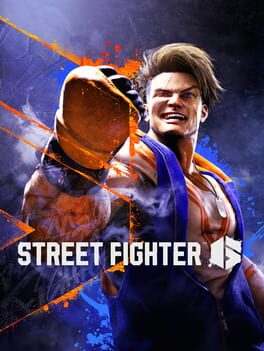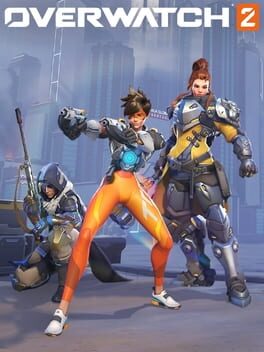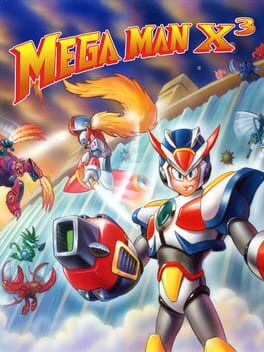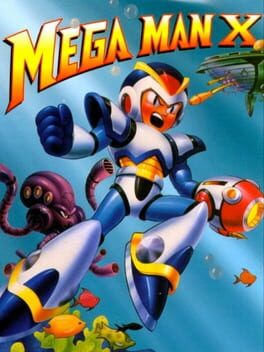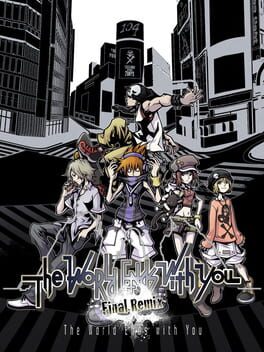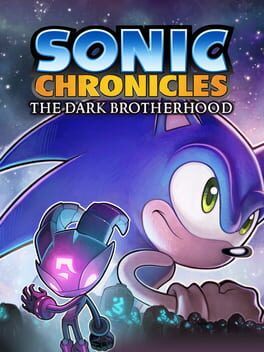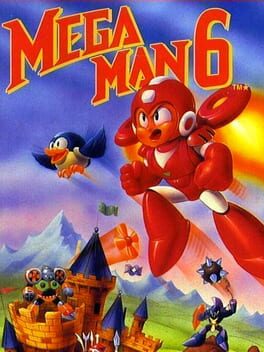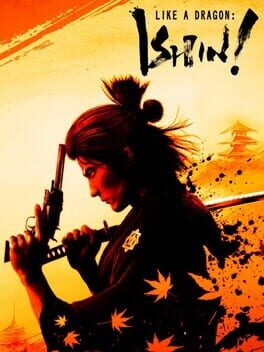itsybitsycherry_
2023
2022
2015
1995
Unfortunately, despite some really great ideas here and there, X3 ultimately fails to live up to the two games preceding it. It's not a bad game by any means; it's perfectly fine, and this series' got worse games, anyway.
I think it's still worth a playthrough if you're going through the whole series, in any case. Doesn't hurt, and I definitely wouldn't call it skip-worthy like I would X6 or X7.
I think it's still worth a playthrough if you're going through the whole series, in any case. Doesn't hurt, and I definitely wouldn't call it skip-worthy like I would X6 or X7.
1994
Fun game, but I find it to generally be a downgrade from X1. Weapons and bosses are worse, level design is less interesting, and the mechanic of the X-Hunters showing up on random stages can force you out of your preferred level order if you want to get the true ending.
Following up on X1 is a pretty hard feat, and I think this does an... alright job. It's still a good time, and I'd argue this is the best X game after X1 (Yeah, I'm not a huge X4 fan, shoot me.)
Following up on X1 is a pretty hard feat, and I think this does an... alright job. It's still a good time, and I'd argue this is the best X game after X1 (Yeah, I'm not a huge X4 fan, shoot me.)
1993
2017
1991
1993
The sixth Mega Man game is a pretty good send-off to the NES era. With solid level design, a great soundtrack, and a pretty well-balanced weapons arsenal (alongside the addition of the Rush Modules), Mega Man 6 proves a fun time, if repetitive. In my opinion, if you need to play just one of the NES-era games, I suggest this one.
This review contains spoilers
It's pretty cool this game finally released in the West. Feels a bit surreal, to be honest.
Some background - Ryu ga Gotoku: Ishin! released in Japan in 2014. Because the series was hanging on by a thread in the West (Yakuza: Dead Souls was a commercial failure and Sega was rapidly losing confidence in the series’ profitability outside Japan, with Yakuza 5 being a digital-only release), Sega understandably refused to localize Ishin!, given it was a spinoff of an underperforming series and set in a time period unfamiliar to most non-Japanese.
Then Yakuza 0 happened, and the series’ popularity exploded. Yakuza: Like a Dragon’s release a few years later only cemented the series’ status as a global superstar. And yet, Ishin! (alongside Kenzan! and the Kurohyou duology), remained Japan-exclusive.
Sega felt confident to finally localize this game thanks to Ghost of Tsushima, with series lead Masayoshi Yokoyama stating its success gave RGG Studios confidence Ishin! could perform well too.
Anyways, that’s all to say that this kind of elusive game to non-Japanese fans is finally in our hands, with Sega already stating a Ryu ga Gotoku Kenzan! localization might be in the cards if Ishin! does well. All in all, my ultimate point is that Ishin! symbolizes how Sega views Like a Dragon now - it’s their superstar franchise, and they believe it can do well even if a game is unfamiliar compared to the rest of the franchise. They trust their now-global audience with it, which is nice!
Like a Dragon: Ishin! is not the exact same game as Ryu ga Gotoku: Ishin!, though. Case in point, the recastings. The cast of this game is modeled after main series characters, and this more modern version of the game replaced several from the original game to appeal to Yakuza 0 and Yakuza: Like a Dragon fans.
The original game was a fanservice game from the start, and now that the series is doing incredibly well, I’d say it was a good call to shake up the lineup a bit with newer, more interesting characters. My one major complaint is the lack of Yakuza 6 representation - only Koshimizu returns, albeit I imagine casting the Yakuza 0 lieutenants already ran the budget pretty hard, and given that Yakuza 6’s major characters were nearly all modeled after their actors, I suppose it makes sense it’d get the shorter end of the stick for this remake. That’s all speculation, though.
Sucks to see the replaced characters gone, and I fully understand why some fans might be annoyed at it, but at the same time… I kinda fail to see how someone can care more about Kugihara from Yakuza 5 than Joon-gi Han. Oh well. That said, I really do get the annoyance at Shigeki Baba’s (Yakuza 5) recasting, given he was modeled after Shunsuke Daito (who, to my understanding, is a pretty big name actor), as well as that of the two fully original characters, Kondo Isami (modeled after actor Eiichiro Funakoshi) and Takechi Hanpeita (modeled after actor Katsura Takahashi).
With all that set dressing out of the way, time to talk about the setting. Like a Dragon: Ishin! takes us away from the blaring lights of Japanese nightlife and into 1860s Japan. The United States has just forced Japan to open up its borders and to accept a very unbalanced trade deal to boot. Unrest begins to brew, with the nation being divided between the loyalists, who seek to restore power to the Emperor, and the Shogunate, who obviously intend to keep their 300-year long reign going. Some groups even begin attacking foreigners, under the “Sonno Joui” doctrine. Point is, Japan was under a ton of tension.
Anyways, here’s the premise of the story - which is just a summary of Chapters 1 and 2. Our protagonist, Sakamoto Ryoma, is a low-class samurai (goshi) and loyalist. His oath brother, Takechi Hanpeita, is the leader of the Tosa Loyalist Party, and after Ryoma returns from training in Edo, is named the vice leader, prompting a minor jealousy-filled scuffle with assassin Okada Izo.
Anyways, it’s not really a Yakuza game with tragedy striking within 10 minutes of the player taking their first step, and Ryoma’s and Takechi’s foster dad, Yoshida Toyo, gets assassinated. After a year of investigating, Ryoma learns that the assassin used the Tennen Rishin style, and that said style is used exclusively by members of the Shinsengumi, a special police force dedicated to protecting the shogunate. And so, under the pseudonym of Saito Hajime, Ryoma joins the Shinsengumi to weed out his dad’s assassin. It’s a revenge story, through and through.
Like a Dragon: Ishin!’s historicity is kind of tenuous. To be more precise, this game takes place in 1867, one year before the real-life Boshin War that ended the Shogunate. By then, many of the real-life counterparts of the cast were dead already, a good chunk of which died years before 1867. The most obvious creative liberty comes from the fact Sakamoto Ryoma and Saito Hajime were two different persons and not the same person using two names. In short, Ishin! gets the broader strokes correct, but takes liberties with many of the finer details.
That said, it does get a lot right, including some surprising attention to detail. The Shinsegumi’s most famous act, the Ikedaya Incident, is recreated ingame, and the game even includes the fact Hajime’s, Toshizo’s, Genzaburo’s, and Sanosuke’s squads arrived late due to camping out at another suspected Loyalist hangout. Tennen Rishin being used primarily by Shinsengumi members is also accurate to the real organization.
I highly recommend doing some research on this era of Japanese history before diving into Like a Dragon: Ishin!. Even if the game itself depicts pretty much just the broader text and some fine print accurately, a general grasp of the era and its tensions adds a lot of texture to the story.
The game tries to ease the player in as well, to… mediocre effects. It has a glossary function, which appears when certain terms show up in dialogue. Just press the button, and voila, a definition of a relevant Japanese word shows up. While a fantastic idea to situate the player without having to work around the term itself or downright replace it, it feels half-baked, as a fair amount of terms don’t have glossary items, and it mostly just boils down to domains most of the time. Terms like “dappan” and “hatamoto” don’t have glossary entries, and that just feels like a missed opportunity.
The story itself is one of the better ones in this franchise, I find. It’s hard to talk about it without spoilers, but there’s a constant tense atmosphere throughout, which is fitting, given you’re essentially a spy in this game - one fuck-up, and Ryoma could be killed. Plus, the Shinsengumi heads all have different ideas of how the organization should be run, leading to a lot of strife; thus, at points, it feels like the organization is on the brink of collapse, adding more fuel to the fire, and that’s not mentioning the fact that, y’know, loyalists want to fucking crush it.
That said, if you know anything about this franchise (as in, the general plot of Yakuza 0, the best-selling game in the entire series), the twist can be seen coming from a mile away. The Shinsengumi is also, y’know, a secret police force, and even if you end up there only as a spy to figure out what happened to your dad and there are plenty of moments showcasing their ruthless cruelty against loyalists, I personally find it ends up portrayed as a heroic force more often than it’s criticized.
Point is, there are no good guys in the storyline. The organization you work for is a cruel secret police that tortures and executes dissidents, and the loyalists’ plan to restore rule to the Emperor, even if well-intentioned, would result in the British Empire jumping in at the last second and colonizing Japan. To some extent, it’s kind of refreshing playing an RGG game with no good guys (Ryoma himself doesn’t shy away from murder), but at the same time, I fail to see what side’s meant to be portrayed sympathetically.
Alright, finally moving on to gameplay. Ryoma has four combat styles, like in Yakuza 0 and Yakuza Kiwami. They cover a huge variety of playstyles and ranges, and so you’re always covered regardless of the situation. Unlike the other games that ran on this engine (Yakuza 5, Yakuza 0, and Yakuza Kiwami), knocked down enemies can be hit by most attacks, similarly to the Dragon Engine games; except for the protagonist leaning down to do so. Here it just sorta happens, but it’s a welcome change nonetheless.
- Ryoma’s first style, Brawler, is unarmed. Unlike Kiryu’s power-oriented and unrefined style of the same name, Ryoma’s Brawler is fast and has more form, and I believe it’s karate-inspired, having a lot of straight punches and knife hand motions. As expected, Ryoma can grab objects and enemies, but Brawler suffers from being his weakest style. It has an instakill in the form of throwing enemies off cliffs, but it’s ineffective against stronger enemies. Ryoma can also use special weapons (such as an Odachi or huge cannons) with this style. Even with its weak attack power against bulkier enemies, it’s still a really fun style, with its speed making it very efficient on smaller enemy groups.
- Swordsman is the second style Ryoma starts the game with, and, as the name implies, it uses his katana. It’s by far the strongest style in terms of sheer power, possessing a guard break and the ability to charge finishing blows for stronger damage. Furthermore, once you get a specific upgrade, you can even disarm enemies with a specific input. Once you get a really strong katana, you can cleave through most enemies with ease, and you can even imbue your sword with status effects. The main drawback this style has is that it’s Ryoma’s slowest style, and finishing blows often leave him vulnerable at the very end. That said, it’s still my personal favorite style.
- As Hanpeita tells you early on, anyone can use a gun, and that includes you! Gunman is the third style Ryoma has, and, as should be obvious, revolves around a handgun. Gunman is very spammable, with the main fire not having an ammo mechanic, while the secondary fire (which uses different types of ammunition) does. This style obviously has the range advantage, and thus it’s easy to take pot shots from far away and watch enemies die as you fill them with lead, unable to do much. It has a lot of cool Heat Actions, encouraging the player to get more daring with it from medium distance as well. A very fun style overall, with a ton of unique mechanics behind its seemingly simple surface.
- Ryoma’s fourth style, Wild Dancer, is a mix of Swordsman and Gunman. Consisting primarily of fast, spinning sword slashes that can be capped off with revolver shots or extended with a secondary, slightly slower Rush Combo (which has Ryoma firing shots wildly in the fourth hit), Wild Dancer excels at crowd control. To make up for its speed and agile evasion, Ryoma becomes unable to block in this style, although a parry can be unlocked. Wild Dancer is really, really fun, albeit its lack of finishing blows in favor of the second Rush Combo (triangle instead fires a gunshot) makes it rather repetitive.
Upgrading the styles is a bit more complex than in most other RGG games - you have “Style Orbs” and “Training Orbs'', which must be placed down on the upgrade wheels. The former can only be applied into the style it belongs to, while the latter can be used anywhere in the wheel as long as you have the preceding upgrade. The idea is that you’ll be replacing the Training Orbs with Style Orbs, which will then give you more Training Orbs to use. In theory, it’s not a bad system, but I’d rather just have a simple upgrade tree like most of the other games.
In addition, once you max out all four styles’ wheels, you can continue getting Orbs to further increase your strength; the typical Limit Break upgrade this series has. Again, not bad in theory… I’d rather have a wheel and a proper end in sight, though.
Furthermore, the Trooper Card system is a thing. Initially limited to the Battle Dungeon side game, Like a Dragon: Ishin! lets you bring them with you outside it and use them in normal battles. Trooper Cards, put as simply as I can, provide abilities when activated. Every card has an active skill, and, if set to the “Corporal” slot, a passive bonus. You can set up to four squads - one per style - and the cards themselves are all nods to other characters in the Yakuza/Like a Dragon series, which is a pretty cool way to include them.
I was pretty wary that Troopers would make combat worse, and, in my experience, they actually didn’t. There’s a very wide variety of effects - from Support Troopers that speed up the recharging for other cards, Attack Troopers that unleash a variety of (often extremely overpowered) attacks, Medical Troopers that heal and cure status effects… you get the gist. Some bosses can use absurd special attacks, too, which is a strange inclusion, especially with the inconsistency, as the vast majority just get an elemental blade or something similar. If you’re all about the period piece immersion, I totally get why someone would hate Troopers and some bosses having similar abilities, but really, my main complaint is the lack of consistency and balancing with them.
To me, the more annoying part about Troopers is the Morale system; if you fail a Battle Dungeon mission with a Trooper whose Morale is low, they’ll desert and fuck off to Mukurogai, where you can rehire them. The trek is annoying as is, but there’s also the fact it seems only one deserter Trooper can spawn there at a time until you get them to rejoin and complete another Battle Dungeon mission, leading to an insufferable amount of back-and-forths. Always save and be sure to visit the tea shop outside HQ frequently, as eating with your Troopers equipped helps raise morale.
Lastly, there are some free DLC Troopers, which… are free for only one save, and then you have to rebuy them; by far one of the scummier tactics Sega has ever done with DLC. There’s also another free DLC Trooper pack, featuring six celebrities: Kenny Omega, Rahul Kohli, Vampy Bit Me, Alex Moukala, CohhCarnage, and Nyanners. I dig it - I don’t use their cards much (save Kenny’s - “Essence of the One Winged Angel” is badass as all hell), and I do wish some Yakuza community figures (like Devilleon7 or CyricZ) got some recognition through these, but, being realistic, bigger celebrities/content creators who happen to be fans are better for marketing.
As aforementioned, we’re back to the 5/0/K1 engine, and… it’s weird, after five games in the Dragon Engine. Interiors are separate realms entered with button presses, things don’t break by walking into them anymore, it doesn’t have the same weight the DE games had, and, in general, it feels a bit stiffer. I got used to it really quickly, but it felt jarring at first.
Anyways, Like a Dragon: Ishin! has an entire side mode to it, titled “Another Life.” It’s a pretty cute farming simulator; you plant vegetables, catch fish/eggs, then make meals and sell them for a bit of extra pocket change and to pay Haruka’s (strange she’s in the side mode given how crucial she is to the main games, but alright) debt. It’s cute, but I didn’t sink that much time into it. The cooking portions are repetitive, and the farming just takes time; I didn’t feel hooked is the point. There’s a story element to it, but, to my understanding, you have to make a ridiculous amount of cash with the meal sales to advance it even once. I didn’t bother.
... Which transitions to my biggest gameplay concern with Ishin! - it’s grindy as fuck. You can (and need) to upgrade your weapons and equipment to do well in the late game, but you make a really paltry amount from anything besides gambling. The materials themselves can be found in the Battle Dungeons subgame (smaller long battles capped off with a miniboss), but each mission has its own loot pool, and what you get from each run is randomized. Add that to the absurd amount of cash you need to get good weapons and weapons to donate to raise the blacksmith’s level, and the game comes to a screeching halt. The best way to get cash (without modding… and I caved.) is to gamble on chicken racing of all things, and not the main game! What happened here?!
I am already aware the original Ishin! is grindy as hell, but experiencing first hand is… different. The remake tries to remedy this by giving you some weapons at some points in the story, but I’d rather the grind not be immensely annoying to begin with. It feels like a bandaid fix.
Next up, minigames! This game’s got a lot, with the two highlights for me being buyo theater and the karaoke. The former is a new dance minigame that utilizes the d-pad and face buttons, and despite me being bad at it and frequently panicking, the music’s great and it’s really well-animated! Karaoke’s the same deal, but with a really big selection - the remake even added a new remix of Baka Mitai, which is great. Everything else is more of the same; there’s gambling, mahjong, shogi, the udon minigame from Yakuza 5, and rock paper scissors where the loser undresses. Sadly, we do not see Ryoma hang dong.
As is RGG tradition, substories are in this game, and they’re… eh? The friendship mechanic from Yakuza 0 is here, and a lot of substories consist purely in starting the friendship meter. Other than that, they mostly follow the usually goofy formatting the rest of the series’ substories does, with the humor coming from Ryoma’s stubbornness and stoicness contrasting with the absurd situations he finds himself in. Some include new minigames, like the Cannonball training and the mailman racing storyline. There’s also a side story here in the form of the tengu ronin, which I didn’t bother much since the trek from and to the HQ you get them from gets annoying incredibly fast.
Graphically, this game looks fantastic… when it doesn’t screw up.
In my experience, I’ve had strange tearing during a few cutscenes, some lag when an effect is drawn for the first time (apparently they’re not pre-cached), and Z-fighting. I’ve seen some truly monstrous glitches from other people, like fully broken texturing and the whole shebang. RGG’s been actually patching this game to clamp down on these, which is good, but it’s weird it even released like this to begin with. The cutscenes (aside from the final boss’ intro cinematic, I believe) are also all in 30FPS, making the transitions rather jarring.
The biggest gameplay glitch I’ve found myself was in the Tokugawa Yoshinobu fight: he throws knives with stunning properties, but they just… didn’t move, and hung out in midair. They still kept their hitbox, so on occasion I accidentally walked into the minefield of floating knives and got stunned, which often led to me getting screwed over. Yeah, not fun, but it’s fixed now.
The soundtrack, though? Fantastic all around. Consisting primarily of a unique, high-energy blend of traditional Japanese instruments with the electronic rock Yakuza is most well-known for, it’s one of the more unique soundtracks the series has to offer; it’s tense, it’s heroic, it’s energetic, and, at points, somewhat sad. Like a Dragon: Ishin! features a few new remixes of tracks from other games:
Yakuza 3 - Fly
Yakuza 4 - Massive Fire
Yakuza 5 - Affected Fight
Yakuza 5 - Collisions of Our Souls
Plus some reused tracks, which kinda feels like cheapening out, but hey, I’m not objecting to them being in a game again:
Yakuza 0 - With Vengeance
Yakuza 0 - Pledge of Demon
Yakuza Kiwami - Pray Me Revive
Yakuza 3 - Sounds Storm
Yakuza 6 - Town Bully
My biggest complaint is with Town Bully being here; Yakuza 6 has next to no representation in the main game, and its inclusion replaces “Rhapsody of Chivalry”, a boss theme from the original specific to its fight. It fits well with the lighter tone said fight has, but… damn, “Rhapsody of Chivalry” is great. I feel they felt bad about Yakuza 6’s minimal representation (again, just one character in the main cast), but I feel there’s a better solution to represent the soundtrack here.
Point is, the soundtrack is great. The new remixes are fantastic, but I do wish they remixed the reused songs from other games and figured out a better way to represent Yakuza 6 without having to replace a unique boss theme. I believe it’s also the longest Yakuza soundtrack (maybe tied or slightly smaller than 5?), and there’s not a single bad song in here, as I expect from RGG Studios.
Closing thoughts
Like a Dragon: Ishin! is pretty much Yakuza All-Stars in the form of a period piece. A fantastic atmosphere and a gripping revenge story with no heroes based around Japan’s most important period, it suffers heavily from grinding and glitches. The combat, overall, is pretty fun, but I miss the fluidity and interconnected overworlds from the Dragon Engine games. The unbalanced series representation and decision to remake only some of the reused songs kind of makes the Yakuza All-Stars angle a bit too skewed towards Yakuza 0 and Yakuza: Like a Dragon, leaving Yakuza 6 lagging behind.
The Trooper Card DLCs are incredibly scummy, and the system itself feels out of place on occasion, especially given not every boss gets the special attacks meant to match your cards. Boss fights can be chaotic, with the latter ones having way too many people around, and the grinding for materials and money is downright disgusting - I detest relying on gambling, so I eventually just installed a mod that increases the money gained from the Battle Dungeons.
I’d suggest waiting for a sale to get this game. I haven’t played the original, but some of those who did insist it’s a better version; which I cannot vouch for, and am admittedly not interested in emulating a game with a guide on my phone, since I don’t speak the language. Even then, Like a Dragon: Ishin! is an overall good time, even if the original is allegedly better. It’s very much worth a shot if you’re a fan of the franchise, with a lot of the appeal coming from seeing fan favorites interact again.
Some background - Ryu ga Gotoku: Ishin! released in Japan in 2014. Because the series was hanging on by a thread in the West (Yakuza: Dead Souls was a commercial failure and Sega was rapidly losing confidence in the series’ profitability outside Japan, with Yakuza 5 being a digital-only release), Sega understandably refused to localize Ishin!, given it was a spinoff of an underperforming series and set in a time period unfamiliar to most non-Japanese.
Then Yakuza 0 happened, and the series’ popularity exploded. Yakuza: Like a Dragon’s release a few years later only cemented the series’ status as a global superstar. And yet, Ishin! (alongside Kenzan! and the Kurohyou duology), remained Japan-exclusive.
Sega felt confident to finally localize this game thanks to Ghost of Tsushima, with series lead Masayoshi Yokoyama stating its success gave RGG Studios confidence Ishin! could perform well too.
Anyways, that’s all to say that this kind of elusive game to non-Japanese fans is finally in our hands, with Sega already stating a Ryu ga Gotoku Kenzan! localization might be in the cards if Ishin! does well. All in all, my ultimate point is that Ishin! symbolizes how Sega views Like a Dragon now - it’s their superstar franchise, and they believe it can do well even if a game is unfamiliar compared to the rest of the franchise. They trust their now-global audience with it, which is nice!
Like a Dragon: Ishin! is not the exact same game as Ryu ga Gotoku: Ishin!, though. Case in point, the recastings. The cast of this game is modeled after main series characters, and this more modern version of the game replaced several from the original game to appeal to Yakuza 0 and Yakuza: Like a Dragon fans.
The original game was a fanservice game from the start, and now that the series is doing incredibly well, I’d say it was a good call to shake up the lineup a bit with newer, more interesting characters. My one major complaint is the lack of Yakuza 6 representation - only Koshimizu returns, albeit I imagine casting the Yakuza 0 lieutenants already ran the budget pretty hard, and given that Yakuza 6’s major characters were nearly all modeled after their actors, I suppose it makes sense it’d get the shorter end of the stick for this remake. That’s all speculation, though.
Sucks to see the replaced characters gone, and I fully understand why some fans might be annoyed at it, but at the same time… I kinda fail to see how someone can care more about Kugihara from Yakuza 5 than Joon-gi Han. Oh well. That said, I really do get the annoyance at Shigeki Baba’s (Yakuza 5) recasting, given he was modeled after Shunsuke Daito (who, to my understanding, is a pretty big name actor), as well as that of the two fully original characters, Kondo Isami (modeled after actor Eiichiro Funakoshi) and Takechi Hanpeita (modeled after actor Katsura Takahashi).
With all that set dressing out of the way, time to talk about the setting. Like a Dragon: Ishin! takes us away from the blaring lights of Japanese nightlife and into 1860s Japan. The United States has just forced Japan to open up its borders and to accept a very unbalanced trade deal to boot. Unrest begins to brew, with the nation being divided between the loyalists, who seek to restore power to the Emperor, and the Shogunate, who obviously intend to keep their 300-year long reign going. Some groups even begin attacking foreigners, under the “Sonno Joui” doctrine. Point is, Japan was under a ton of tension.
Anyways, here’s the premise of the story - which is just a summary of Chapters 1 and 2. Our protagonist, Sakamoto Ryoma, is a low-class samurai (goshi) and loyalist. His oath brother, Takechi Hanpeita, is the leader of the Tosa Loyalist Party, and after Ryoma returns from training in Edo, is named the vice leader, prompting a minor jealousy-filled scuffle with assassin Okada Izo.
Anyways, it’s not really a Yakuza game with tragedy striking within 10 minutes of the player taking their first step, and Ryoma’s and Takechi’s foster dad, Yoshida Toyo, gets assassinated. After a year of investigating, Ryoma learns that the assassin used the Tennen Rishin style, and that said style is used exclusively by members of the Shinsengumi, a special police force dedicated to protecting the shogunate. And so, under the pseudonym of Saito Hajime, Ryoma joins the Shinsengumi to weed out his dad’s assassin. It’s a revenge story, through and through.
Like a Dragon: Ishin!’s historicity is kind of tenuous. To be more precise, this game takes place in 1867, one year before the real-life Boshin War that ended the Shogunate. By then, many of the real-life counterparts of the cast were dead already, a good chunk of which died years before 1867. The most obvious creative liberty comes from the fact Sakamoto Ryoma and Saito Hajime were two different persons and not the same person using two names. In short, Ishin! gets the broader strokes correct, but takes liberties with many of the finer details.
That said, it does get a lot right, including some surprising attention to detail. The Shinsegumi’s most famous act, the Ikedaya Incident, is recreated ingame, and the game even includes the fact Hajime’s, Toshizo’s, Genzaburo’s, and Sanosuke’s squads arrived late due to camping out at another suspected Loyalist hangout. Tennen Rishin being used primarily by Shinsengumi members is also accurate to the real organization.
I highly recommend doing some research on this era of Japanese history before diving into Like a Dragon: Ishin!. Even if the game itself depicts pretty much just the broader text and some fine print accurately, a general grasp of the era and its tensions adds a lot of texture to the story.
The game tries to ease the player in as well, to… mediocre effects. It has a glossary function, which appears when certain terms show up in dialogue. Just press the button, and voila, a definition of a relevant Japanese word shows up. While a fantastic idea to situate the player without having to work around the term itself or downright replace it, it feels half-baked, as a fair amount of terms don’t have glossary items, and it mostly just boils down to domains most of the time. Terms like “dappan” and “hatamoto” don’t have glossary entries, and that just feels like a missed opportunity.
The story itself is one of the better ones in this franchise, I find. It’s hard to talk about it without spoilers, but there’s a constant tense atmosphere throughout, which is fitting, given you’re essentially a spy in this game - one fuck-up, and Ryoma could be killed. Plus, the Shinsengumi heads all have different ideas of how the organization should be run, leading to a lot of strife; thus, at points, it feels like the organization is on the brink of collapse, adding more fuel to the fire, and that’s not mentioning the fact that, y’know, loyalists want to fucking crush it.
That said, if you know anything about this franchise (as in, the general plot of Yakuza 0, the best-selling game in the entire series), the twist can be seen coming from a mile away. The Shinsengumi is also, y’know, a secret police force, and even if you end up there only as a spy to figure out what happened to your dad and there are plenty of moments showcasing their ruthless cruelty against loyalists, I personally find it ends up portrayed as a heroic force more often than it’s criticized.
Point is, there are no good guys in the storyline. The organization you work for is a cruel secret police that tortures and executes dissidents, and the loyalists’ plan to restore rule to the Emperor, even if well-intentioned, would result in the British Empire jumping in at the last second and colonizing Japan. To some extent, it’s kind of refreshing playing an RGG game with no good guys (Ryoma himself doesn’t shy away from murder), but at the same time, I fail to see what side’s meant to be portrayed sympathetically.
Alright, finally moving on to gameplay. Ryoma has four combat styles, like in Yakuza 0 and Yakuza Kiwami. They cover a huge variety of playstyles and ranges, and so you’re always covered regardless of the situation. Unlike the other games that ran on this engine (Yakuza 5, Yakuza 0, and Yakuza Kiwami), knocked down enemies can be hit by most attacks, similarly to the Dragon Engine games; except for the protagonist leaning down to do so. Here it just sorta happens, but it’s a welcome change nonetheless.
- Ryoma’s first style, Brawler, is unarmed. Unlike Kiryu’s power-oriented and unrefined style of the same name, Ryoma’s Brawler is fast and has more form, and I believe it’s karate-inspired, having a lot of straight punches and knife hand motions. As expected, Ryoma can grab objects and enemies, but Brawler suffers from being his weakest style. It has an instakill in the form of throwing enemies off cliffs, but it’s ineffective against stronger enemies. Ryoma can also use special weapons (such as an Odachi or huge cannons) with this style. Even with its weak attack power against bulkier enemies, it’s still a really fun style, with its speed making it very efficient on smaller enemy groups.
- Swordsman is the second style Ryoma starts the game with, and, as the name implies, it uses his katana. It’s by far the strongest style in terms of sheer power, possessing a guard break and the ability to charge finishing blows for stronger damage. Furthermore, once you get a specific upgrade, you can even disarm enemies with a specific input. Once you get a really strong katana, you can cleave through most enemies with ease, and you can even imbue your sword with status effects. The main drawback this style has is that it’s Ryoma’s slowest style, and finishing blows often leave him vulnerable at the very end. That said, it’s still my personal favorite style.
- As Hanpeita tells you early on, anyone can use a gun, and that includes you! Gunman is the third style Ryoma has, and, as should be obvious, revolves around a handgun. Gunman is very spammable, with the main fire not having an ammo mechanic, while the secondary fire (which uses different types of ammunition) does. This style obviously has the range advantage, and thus it’s easy to take pot shots from far away and watch enemies die as you fill them with lead, unable to do much. It has a lot of cool Heat Actions, encouraging the player to get more daring with it from medium distance as well. A very fun style overall, with a ton of unique mechanics behind its seemingly simple surface.
- Ryoma’s fourth style, Wild Dancer, is a mix of Swordsman and Gunman. Consisting primarily of fast, spinning sword slashes that can be capped off with revolver shots or extended with a secondary, slightly slower Rush Combo (which has Ryoma firing shots wildly in the fourth hit), Wild Dancer excels at crowd control. To make up for its speed and agile evasion, Ryoma becomes unable to block in this style, although a parry can be unlocked. Wild Dancer is really, really fun, albeit its lack of finishing blows in favor of the second Rush Combo (triangle instead fires a gunshot) makes it rather repetitive.
Upgrading the styles is a bit more complex than in most other RGG games - you have “Style Orbs” and “Training Orbs'', which must be placed down on the upgrade wheels. The former can only be applied into the style it belongs to, while the latter can be used anywhere in the wheel as long as you have the preceding upgrade. The idea is that you’ll be replacing the Training Orbs with Style Orbs, which will then give you more Training Orbs to use. In theory, it’s not a bad system, but I’d rather just have a simple upgrade tree like most of the other games.
In addition, once you max out all four styles’ wheels, you can continue getting Orbs to further increase your strength; the typical Limit Break upgrade this series has. Again, not bad in theory… I’d rather have a wheel and a proper end in sight, though.
Furthermore, the Trooper Card system is a thing. Initially limited to the Battle Dungeon side game, Like a Dragon: Ishin! lets you bring them with you outside it and use them in normal battles. Trooper Cards, put as simply as I can, provide abilities when activated. Every card has an active skill, and, if set to the “Corporal” slot, a passive bonus. You can set up to four squads - one per style - and the cards themselves are all nods to other characters in the Yakuza/Like a Dragon series, which is a pretty cool way to include them.
I was pretty wary that Troopers would make combat worse, and, in my experience, they actually didn’t. There’s a very wide variety of effects - from Support Troopers that speed up the recharging for other cards, Attack Troopers that unleash a variety of (often extremely overpowered) attacks, Medical Troopers that heal and cure status effects… you get the gist. Some bosses can use absurd special attacks, too, which is a strange inclusion, especially with the inconsistency, as the vast majority just get an elemental blade or something similar. If you’re all about the period piece immersion, I totally get why someone would hate Troopers and some bosses having similar abilities, but really, my main complaint is the lack of consistency and balancing with them.
To me, the more annoying part about Troopers is the Morale system; if you fail a Battle Dungeon mission with a Trooper whose Morale is low, they’ll desert and fuck off to Mukurogai, where you can rehire them. The trek is annoying as is, but there’s also the fact it seems only one deserter Trooper can spawn there at a time until you get them to rejoin and complete another Battle Dungeon mission, leading to an insufferable amount of back-and-forths. Always save and be sure to visit the tea shop outside HQ frequently, as eating with your Troopers equipped helps raise morale.
Lastly, there are some free DLC Troopers, which… are free for only one save, and then you have to rebuy them; by far one of the scummier tactics Sega has ever done with DLC. There’s also another free DLC Trooper pack, featuring six celebrities: Kenny Omega, Rahul Kohli, Vampy Bit Me, Alex Moukala, CohhCarnage, and Nyanners. I dig it - I don’t use their cards much (save Kenny’s - “Essence of the One Winged Angel” is badass as all hell), and I do wish some Yakuza community figures (like Devilleon7 or CyricZ) got some recognition through these, but, being realistic, bigger celebrities/content creators who happen to be fans are better for marketing.
As aforementioned, we’re back to the 5/0/K1 engine, and… it’s weird, after five games in the Dragon Engine. Interiors are separate realms entered with button presses, things don’t break by walking into them anymore, it doesn’t have the same weight the DE games had, and, in general, it feels a bit stiffer. I got used to it really quickly, but it felt jarring at first.
Anyways, Like a Dragon: Ishin! has an entire side mode to it, titled “Another Life.” It’s a pretty cute farming simulator; you plant vegetables, catch fish/eggs, then make meals and sell them for a bit of extra pocket change and to pay Haruka’s (strange she’s in the side mode given how crucial she is to the main games, but alright) debt. It’s cute, but I didn’t sink that much time into it. The cooking portions are repetitive, and the farming just takes time; I didn’t feel hooked is the point. There’s a story element to it, but, to my understanding, you have to make a ridiculous amount of cash with the meal sales to advance it even once. I didn’t bother.
... Which transitions to my biggest gameplay concern with Ishin! - it’s grindy as fuck. You can (and need) to upgrade your weapons and equipment to do well in the late game, but you make a really paltry amount from anything besides gambling. The materials themselves can be found in the Battle Dungeons subgame (smaller long battles capped off with a miniboss), but each mission has its own loot pool, and what you get from each run is randomized. Add that to the absurd amount of cash you need to get good weapons and weapons to donate to raise the blacksmith’s level, and the game comes to a screeching halt. The best way to get cash (without modding… and I caved.) is to gamble on chicken racing of all things, and not the main game! What happened here?!
I am already aware the original Ishin! is grindy as hell, but experiencing first hand is… different. The remake tries to remedy this by giving you some weapons at some points in the story, but I’d rather the grind not be immensely annoying to begin with. It feels like a bandaid fix.
Next up, minigames! This game’s got a lot, with the two highlights for me being buyo theater and the karaoke. The former is a new dance minigame that utilizes the d-pad and face buttons, and despite me being bad at it and frequently panicking, the music’s great and it’s really well-animated! Karaoke’s the same deal, but with a really big selection - the remake even added a new remix of Baka Mitai, which is great. Everything else is more of the same; there’s gambling, mahjong, shogi, the udon minigame from Yakuza 5, and rock paper scissors where the loser undresses. Sadly, we do not see Ryoma hang dong.
As is RGG tradition, substories are in this game, and they’re… eh? The friendship mechanic from Yakuza 0 is here, and a lot of substories consist purely in starting the friendship meter. Other than that, they mostly follow the usually goofy formatting the rest of the series’ substories does, with the humor coming from Ryoma’s stubbornness and stoicness contrasting with the absurd situations he finds himself in. Some include new minigames, like the Cannonball training and the mailman racing storyline. There’s also a side story here in the form of the tengu ronin, which I didn’t bother much since the trek from and to the HQ you get them from gets annoying incredibly fast.
Graphically, this game looks fantastic… when it doesn’t screw up.
In my experience, I’ve had strange tearing during a few cutscenes, some lag when an effect is drawn for the first time (apparently they’re not pre-cached), and Z-fighting. I’ve seen some truly monstrous glitches from other people, like fully broken texturing and the whole shebang. RGG’s been actually patching this game to clamp down on these, which is good, but it’s weird it even released like this to begin with. The cutscenes (aside from the final boss’ intro cinematic, I believe) are also all in 30FPS, making the transitions rather jarring.
The biggest gameplay glitch I’ve found myself was in the Tokugawa Yoshinobu fight: he throws knives with stunning properties, but they just… didn’t move, and hung out in midair. They still kept their hitbox, so on occasion I accidentally walked into the minefield of floating knives and got stunned, which often led to me getting screwed over. Yeah, not fun, but it’s fixed now.
The soundtrack, though? Fantastic all around. Consisting primarily of a unique, high-energy blend of traditional Japanese instruments with the electronic rock Yakuza is most well-known for, it’s one of the more unique soundtracks the series has to offer; it’s tense, it’s heroic, it’s energetic, and, at points, somewhat sad. Like a Dragon: Ishin! features a few new remixes of tracks from other games:
Yakuza 3 - Fly
Yakuza 4 - Massive Fire
Yakuza 5 - Affected Fight
Yakuza 5 - Collisions of Our Souls
Plus some reused tracks, which kinda feels like cheapening out, but hey, I’m not objecting to them being in a game again:
Yakuza 0 - With Vengeance
Yakuza 0 - Pledge of Demon
Yakuza Kiwami - Pray Me Revive
Yakuza 3 - Sounds Storm
Yakuza 6 - Town Bully
My biggest complaint is with Town Bully being here; Yakuza 6 has next to no representation in the main game, and its inclusion replaces “Rhapsody of Chivalry”, a boss theme from the original specific to its fight. It fits well with the lighter tone said fight has, but… damn, “Rhapsody of Chivalry” is great. I feel they felt bad about Yakuza 6’s minimal representation (again, just one character in the main cast), but I feel there’s a better solution to represent the soundtrack here.
Point is, the soundtrack is great. The new remixes are fantastic, but I do wish they remixed the reused songs from other games and figured out a better way to represent Yakuza 6 without having to replace a unique boss theme. I believe it’s also the longest Yakuza soundtrack (maybe tied or slightly smaller than 5?), and there’s not a single bad song in here, as I expect from RGG Studios.
Closing thoughts
Like a Dragon: Ishin! is pretty much Yakuza All-Stars in the form of a period piece. A fantastic atmosphere and a gripping revenge story with no heroes based around Japan’s most important period, it suffers heavily from grinding and glitches. The combat, overall, is pretty fun, but I miss the fluidity and interconnected overworlds from the Dragon Engine games. The unbalanced series representation and decision to remake only some of the reused songs kind of makes the Yakuza All-Stars angle a bit too skewed towards Yakuza 0 and Yakuza: Like a Dragon, leaving Yakuza 6 lagging behind.
The Trooper Card DLCs are incredibly scummy, and the system itself feels out of place on occasion, especially given not every boss gets the special attacks meant to match your cards. Boss fights can be chaotic, with the latter ones having way too many people around, and the grinding for materials and money is downright disgusting - I detest relying on gambling, so I eventually just installed a mod that increases the money gained from the Battle Dungeons.
I’d suggest waiting for a sale to get this game. I haven’t played the original, but some of those who did insist it’s a better version; which I cannot vouch for, and am admittedly not interested in emulating a game with a guide on my phone, since I don’t speak the language. Even then, Like a Dragon: Ishin! is an overall good time, even if the original is allegedly better. It’s very much worth a shot if you’re a fan of the franchise, with a lot of the appeal coming from seeing fan favorites interact again.
1992
2011
One of the greatest sequels ever made in the medium, Portal 2 takes everything the first game did, expands upon it considerably, then ties it all together with a fascinating, gripping story and world.
I’d honestly call this game flawless, although some might prefer the first game’s tighter pacing and shorter, more replayable playtime. Even so, I consider this game to be Valve’s magnum opus and one of very few games I’d claim is a must-play. I wholeheartedly recommend it.
I’d honestly call this game flawless, although some might prefer the first game’s tighter pacing and shorter, more replayable playtime. Even so, I consider this game to be Valve’s magnum opus and one of very few games I’d claim is a must-play. I wholeheartedly recommend it.
